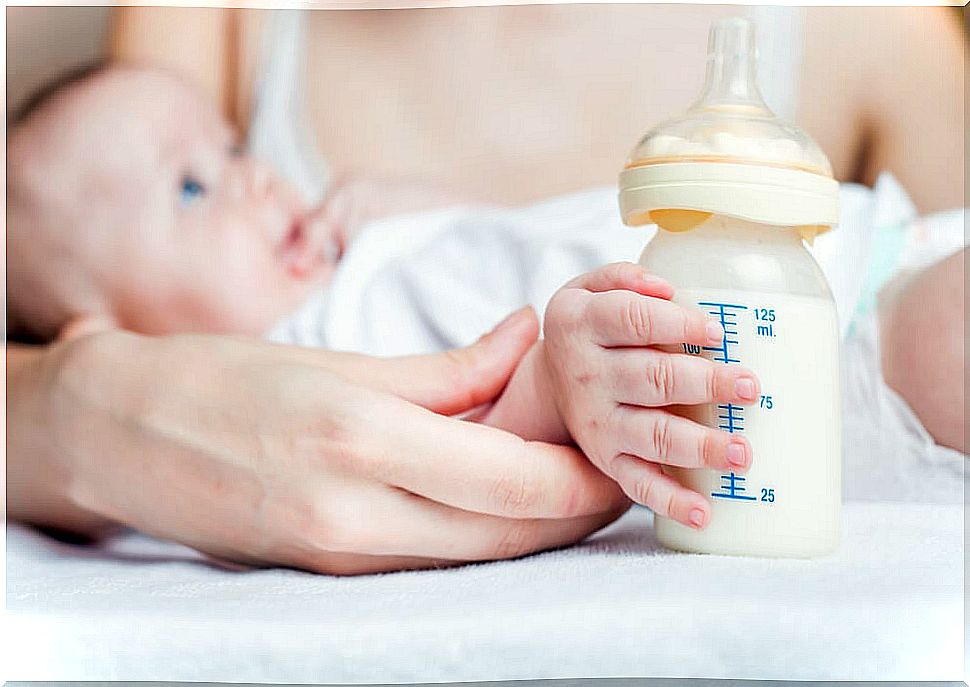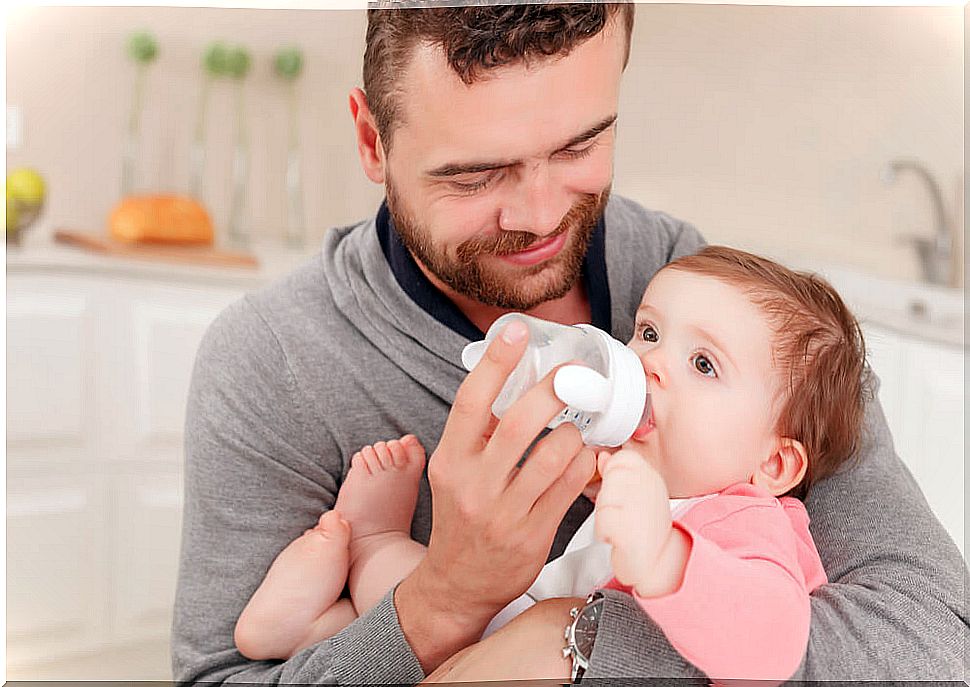How To Get Your Baby Used To The Bottle?
Breast milk is the best food for a baby during the first months of his life. However, for various reasons, it is necessary to accustom your baby to the bottle.
Sometimes there doesn’t seem to be a problem. However, in other cases, it seems that the child rejects the bottle. This may be due to the texture of the nipple, the liquid being too hot, or a host of other things that we will discuss with you.
Now, what should you do in a case like this? Helplessness and paralysis is not an option, because the baby has to feed
What you should know before getting your baby used to the bottle

First of all, we must take into account that the baby’s experience to feed is unique. Breastfeeding not only helps the child to nourish itself, but also establishes a very deep bond between mother and child, as this study published in the Academic Collection of Social Sciences points out . Therefore, it is not uncommon for the little one to find it difficult to get used to a new way of eating.
Also, even if the baby was born a short time ago, it can recognize the differences in smell, texture and warmth between the artificial nipple and the information it perceives from the human nipple. Knowing this, you are more likely to approach the process with greater patience and encouragement.
How to accustom your baby to the bottle?
Now, so that you can accustom your baby to the bottle, you have to plan it carefully and in advance, especially if you know that your pace of life or needs require your baby to alternate between the breast and the bottle.
To do this, the first and most advisable thing is to wait for breastfeeding to be regularized. This event occurs three or four weeks after being born.
Once breastfeeding is established, a two-week trial period should be contemplated before alternating feeding with the bottle. The objective is to solve any complication derived from the change in habits.
After having defined the scheme to accustom the baby to the bottle, we must consider other aspects that can facilitate the transition in the nutrition of the little one. Here is a short list.
The best moment
First of all, we have already commented that it is necessary to establish alternation, but you do not have to make this process a suffering for your baby. So instead of trying to bottle feed him when he’s hungry, try when he’s happy and relaxed.
- It is recommended to do it in intermediate shots; not in the first take or the last. Babies are most attached to breastfeeding during these times.
- However, if this technique doesn’t work, try bottle feeding a little later than usual so that she is hungry and ready to drink from the bottle.
The choice of bottle and nipple is vital
To interfere as little as possible in the change of lactation, it is recommended to pay special attention to the selection of the bottle. To do this, you can try the long, round and soft nipple. Also, avoid products that claim to be “anatomical” since they don’t really look like the nipple.
The purpose of the selection is to offer through the bottle an experience very similar to natural breastfeeding so that the little one can latch on to the nipple on its own. On the other hand, special attention should be paid to the size and flow of the nipples. You need to find the measure that most closely resembles the natural flow; otherwise, the baby could be stressed by noticing that little or too much milk comes out.
The most recommended posture

Today there are very different opinions regarding the position of the baby when feeding. For example, there are those who recommend not to imitate the breastfeeding position when feeding the baby. Rather, they point out that you should stand upright, as if you were sitting down.
This posture can be achieved by sitting in a baby seat or special car seat. Once the little one has gotten used to the bottle, it will be possible to return to the nursing position.
There are also those who advocate keeping the little one in the natural position when given food so that he feels relaxed. In the end, the choice of technique can be defined depending on the results with your baby.
Be careful with the association between milk and mom
Did you know that babies can smell their mothers’ scent from less than twenty feet away? The ability of children to recognize their mother is amazing.
For that reason, it is important to allow someone else to give the baby the first bottle and to avoid being confused by not taking from the mother’s breast. In this way, the little one will be able to differentiate the experience and, thus, get used to it in a short time.
Definitely, getting the baby used to the bottle is not an easy task. It requires effort, patience and perseverance ; but we are sure that with these tips you will be able to make this transition in less time.









